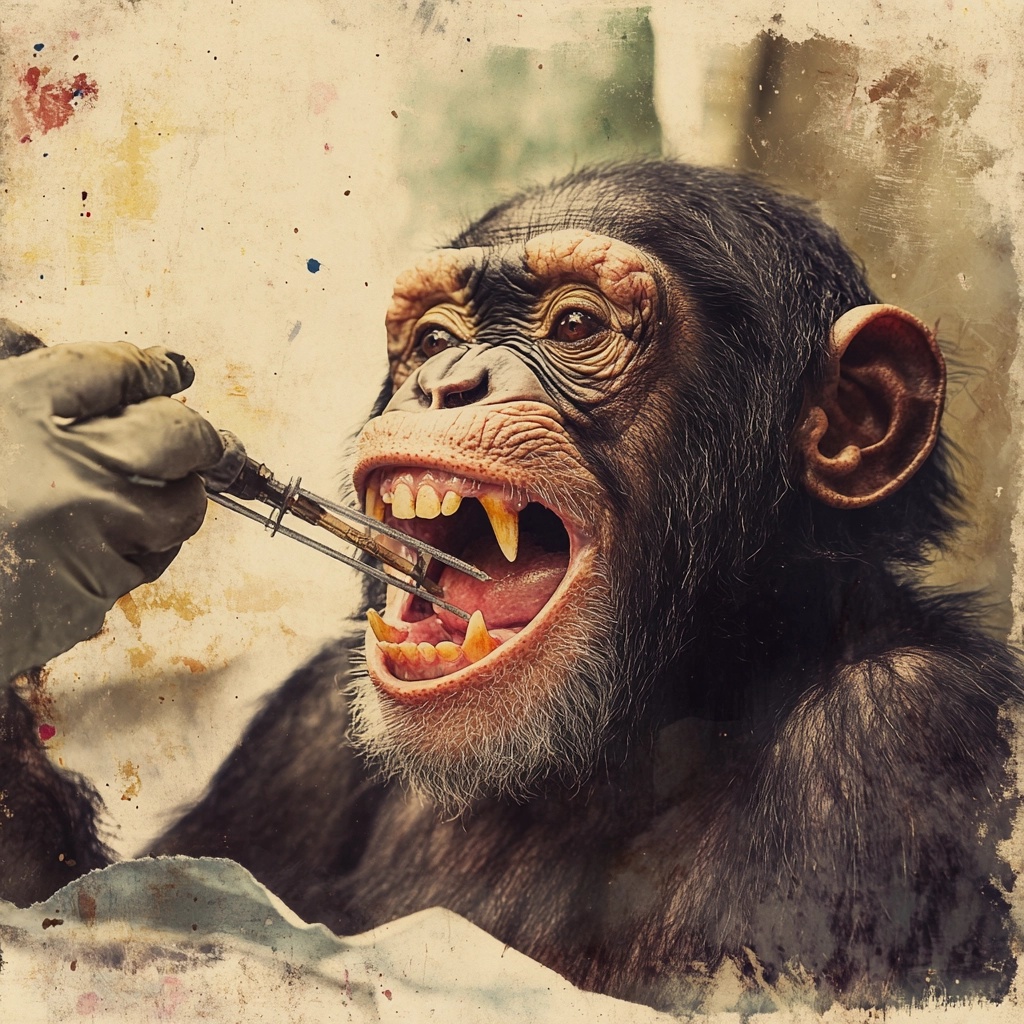YZUR (2)
By:
September 16, 2025

Inspired no doubt by Richard Lynch Garner’s widely publicized 1900 study Apes and Monkeys: Their Life and Language, Lugones’ proto-sf story about the secret of chimpanzee intelligence (and the cruelty of science) was first published in the author’s 1906 collection Las Fuerzas Extrañas (Strange Forces). Translation by Carlos Costa and Georges Dodds for ERBzine.com. HiLoBooks is pleased to serialize an excerpt for HILOBROW’s readers.
ALL INSTALLMENTS: 1 | 2 | 3 | 4 | 5.
Fortunately, monkeys have, along their numerous bad habits, a taste for learning, as their imitative tendency illustrates; a good memory, a capacity for reflection resulting in a strong ability for dissimulation, and an attention span comparatively more developed than that of a child. They are, then, pedagogically-speaking, most favourable subjects.
In addition, mine was young, and it is known that youth constitutes the most intellectual time for monkeys, similar in this to the negro. The difficulty resided only in what method to use in getting words across to him. Knowing of all the fruitless attempts of my predecessors; it would be fruitless to add, that despite the competence of some of them yet the fruitlessness of all their efforts, my designs were doomed to failure. Much thought on the subject led me to the conclusion that:
The first goal consists of developing the monkey’s phonic apparatus.
Thus is it, in effect, how one proceeds with deaf people before teaching them to articulate. I had not long considered this question, when the analogies between the deaf-mute and the monkey overwhelmed my thoughts.
First of all, their extraordinary range of mimicry, compensating for their lack of an articulated language, demonstrates that not having the ability to speak does not mean one stops thinking, i.e., that the waning of one faculty results from by the loss of another. Other more specific characteristics must then be taken into account: work ethic, loyalty, courage, clearly bolstered by two further characteristics whose synergism is truly revealing; the facility for feats of balance and the resistance to dizziness and nausea.
I then decided to begin my work with a genuine exercise of the lips and tongue of my monkey, treating him in this manner as a mute-deaf. Furthermore, I emphasized his use of hearing, so as to establish direct communication through the use of words, alleviating the need for a tactile approach. The reader will see that in this case my expectations were overly optimistic.
Fortunately, of all of the great monkeys, the chimpanzees are those with the most adaptable lips; and in this particular case, Yzur, having suffered throat infections, knew how to open his mouth so that it could be examined.
A first assessment partly confirmed my suspicions. The tongue remained at the back of his mouth, like an inert mass, without movements other than in swallowing. The exercise has produced its effect rapidly, because in two months he already knew how to stick out his tongue in jest. This was the first occasion that I know of when I was able to link the movement of his tongue to a concept; a relationship, on the other hand, perfectly in keeping with his nature.
It was harder to work with lips because I had to stretch them apart with clamps; but he understood — perhaps by my expression — the importance of that anomalous task and undertook it with gusto. While I was demonstrating the labials movements he had yet to practice, he remained seated, with his arm twisted backwards scratching his rump and yawing in doubtful concentration, or smoothing his sideburns with the air of a man who is working out something in his head by means of rythmical gestures. In the end he learned to move his lips.
RADIUM AGE PROTO-SF: “Radium Age” is Josh Glenn’s name for the nascent sf genre’s c. 1900–1935 era, a period which saw the discovery of radioactivity, i.e., the revelation that matter itself is constantly in movement — a fitting metaphor for the first decades of the 20th century, during which old scientific, religious, political, and social certainties were shattered. More info here.
SERIALIZED BY HILOBOOKS: James Parker’s Cocky the Fox | Annalee Newitz’s “The Great Oxygen Race” | Matthew Battles’s “Imago” | & many more original and reissued novels and stories.
